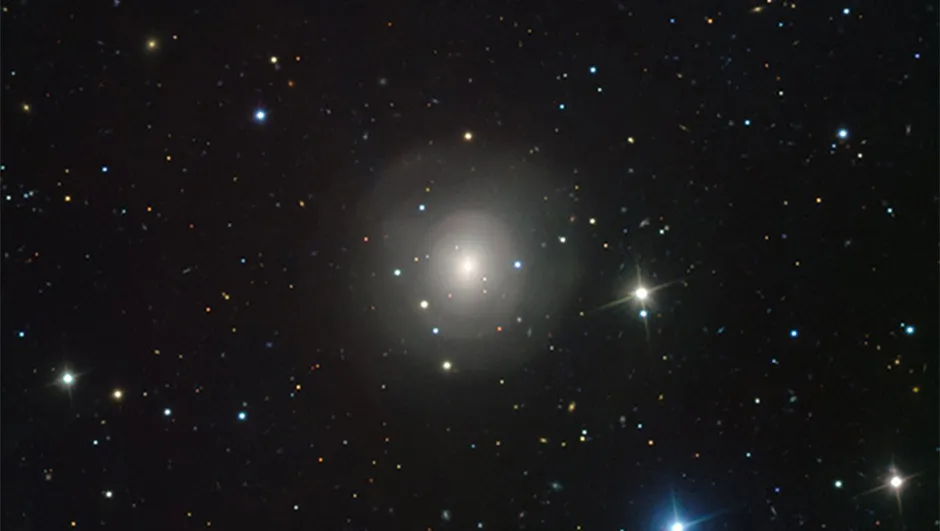Visible light from the source event of a gravitational wave has been detected for the first time.
The wave was created by the collision of two neutron stars, and was shortly followed by a gamma-ray burst (GRB) – the strongest evidence yet that such collisions are responsible for GRBs.
Gravitational waves are ripples in space time caused by moving masses, but the effects are usually so tiny that they have only recently been detected.
The wave was detected on 17 August 2017 by the LIGO-Virgo observatory network, which triangulated the source of the wave to an area of the southern sky the size of several hundred full Moons.
Two seconds after the initial event, a GBR was seen in the same area of sky by NASA’s Fermi Gamma-ray Space Telescope and ESA’s International Gamma Ray Astrophysics Laboratory.
As soon as the detections were confirmed, a call went out to the best telescopes teams around the world, asking them to look for any sign of the event that produced the waves.
The Swope Telescope was the first to detect a new light source near NGC 4993, a lenticular galaxy 130 million lightyears away – about the same distance as the origin of the wave.
Other scopes quickly picked up the signal and watched as the bright light rapidly changed over the next few nights.

“When the spectrum appeared on our screens I realised that this was the most unusual transient event I’d ever seen,” says Stephen Smartt who led the observations taken by ESO’s New Technology Telescope.
“I have never seen anything like it.
Our data, along with data from other groups, proved to everyone that this was not a supernova or a foreground variable star, but was something quite remarkable.”
The source of the light is thought to be a bright kilonova – an explosion 1,000 times brighter than a typical nova – caused by two neutron stars colliding together.
These explosions are so intense that they throw out material at 20 per cent the speed of light, and the colour of the kilonova shifts from red to blue within a few days; far faster than any other stellar explosion.
It has taken the combined visual, gamma-ray and gravitational observations to understand what this event was, illustrating just how important gravitational wave research will be to astronomy in the future.
“There are rare occasions when a scientist has the chance to witness a new era at its beginning,” says Elena Pian, astronomer with INAF, Italy, and lead author of one of the Nature papers.
“This is one such time.”
